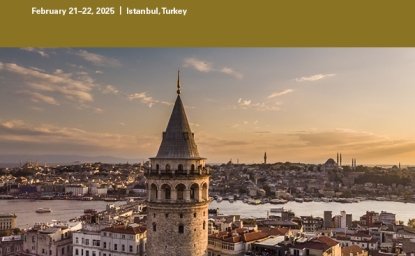201. Hungary's Trans-Sovereign Project (Ten Years After)

An important aspect of Hungarian politics in the first post-communist decade has been the governments' consistent efforts to create institutionalized forms for maintaining a Hungarian nation across the borders of Hungary. The "Hungarian project" aims to find trans-sovereign institutional solutions to a trans-sovereign problem in an international system that continues to be based on the principle of territorial sovereignty. Consequently, the Hungarian national strategy is best understood in the comparative context of contemporary challenges to the principle of territorial sovereignty.
Territorial sovereignty is the form of political organization that has dominated the international system since the Peace of Westphalia in 1648. In the Westphalian order, states have exclusive and final jurisdiction over territory, as well as the resources and populations that lie within their borders. Over the centuries, sovereignty has gained both positive and negative definitions. According to positive sovereignty, a state is expected to provide collective goods for its population, while negative sovereignty requires that no other power interfere in a state's domestic affairs.
In the course of European state development after the Westphalian Peace accords, established patterns of state sovereignty were repeatedly challenged and rearranged, yet the principle of sovereignty remained in place. Today, many international relations theorists argue that the principle of sovereignty is under siege, as European integration and the complementary processes of globalization and regionalization present unprecedented challenges to the Westphalian international order. Others, however, contend that although territorial sovereignty (especially negative sovereignty) has weakened in many ways, no powerful alternative forms of organization are emerging to replace the system of sovereign states. Although international organizations, markets, and non-state actors claim authority over issues that were traditionally considered to be the exclusive domains of sovereign states, some states continue to be more interested in consolidating their sovereignty than in sacrificing it in exchange for trans-sovereign institutions.
The case of Hungarian national politics illustrates some of the most interesting questions in the debate about territorial sovereignty. The Hungarian governments throughout the 1990s have pursued a strategy of maintaining and reproducing a Hungarian nation that reached beyond Hungary's territorial borders. Instead of a classic nationalist project (to establish a "nation-state" either by territorial claims or by encouraging the movement of ethnic Hungarians into Hungary), these governments have consistently opted for a trans-sovereign national strategy. This strategy has no institutional traditions, either in the international system or in Hungarian history.
Instead of constituting a reflection of a shared liberal belief in the benefits of greater interdependence, however, this trans-sovereign project is a realist compromise. It reflects a consensus among the dominant Hungarian political elite that the contemporary international order will not allow for the revision of Hungary's borders. [After World War II, the pursuit of a "nation-state" by border revision became an unacceptable goal in Europe, as "nation-state" policies remained the luxury of "titular" majorities in multiethnic states. Post-Cold War international society remains unfavorable to challenges to established territorial boundaries. The peaceful division of formerly federative states, such as the Czecho-Slovak "velvet divorce" or the re-gained independence of the Baltic states, is an entirely different matter.] The adaptation of the West German model, to sponsor the emigration of ethnic Hungarians into Hungary, is also unfeasible under Hungarian socio-economic conditions. Thus, as an alternative to a "nation- state," the Hungarian governments have attempted to simultaneously pursue the creation of a system of institutions that would provide a "collective national good" for all Hungarians, including strengthening the status of Hungarians abroad, and membership in the European Union.
The desire to care for all Hungarians abroad was articulated in the Hungarian constitution. The Antall government established the Office for Hungarians Abroad and began supporting a network of organizations that became primary institutions for "Hungarian- Hungarian" relations throughout the Antall and Horn eras. The coalition government under Prime Minister Viktor Orban intensified the efforts to institutionalize Hungary's relations with Hungarian communities in the neighboring countries. The goal of weakening state sovereignty in the region became articulated in various ways in Hungarian political discourse, most often as the need for the "spiritualization" or "virtualization" of borders.
As reflected in this political discourse, Hungarian politicians envision a new pattern of authority in the region, a "Europe of regions," with multiple centers of power and multiple loyalties. This vision, however, presents a series of problems for Hungary. As sovereignty is a relation-based concept, Hungary cannot unilaterally create a system of weak sovereignty. All of the former Soviet-bloc states had recently emerged from a system of weak sovereignty under the Soviet empire. During the first decade of post-communist institutionalization, all of Hungary's neighbors were more interested in marking their territorial borders than in making them invisible. Hungary's neighbors had an additional interest in stronger, rather than weaker, state sovereignty in that, with the exception of Romania, all of these states were drawing new territorial boundaries at the beginning of the decade. In Romania, the political elite in charge of designing the institutions of the post-Ceausescu state also opted for a unitary nation-state model and showed little inclination to "virtualize" their borders.
Luckily for Hungary, all of these governments, with the exception of Serbia, have demonstrated a real interest in "joining Europe," and this shared pursuit has provided the Hungarian political elite with an attractive framework for addressing their trans-sovereign problem. Hungary perceived the European Union to be the only trans-sovereign institution to which any of the neighboring states would willingly surrender a considerable portion of their sovereignty and thereby loosen their control over their respective Hungarian minority populations. The European Union is viewed as the institution which would provide the framework for Hungarians to live as though there were no political borders separating them, thereby eliminating citizenship constraints. For this reason, all Hungarian political parties, irrespective of persuasions, have embraced the idea of European integration together with Hungary's neighbors. [Political parties that advocate national policies in other European countries are typically less inclined to give up state sovereignty to international institutions.]
The prospect of Hungary becoming a member of the European Union along with all of its neighbors, however, is quite weak. Hungary itself may not become a full member within the next few years, and the admission of Croatia, Romania, Ukraine, and Serbia in the near future is highly unlikely. Consequently, even if Hungary's neighbors consented to the weakening of the system of state sovereignty in the region, the probability that Hungarians in most of the neighboring countries will remain outside the EU after Hungary's entrance presents the Hungarian government with a new dilemma. The European Union is in the process of drawing clear boundaries of territorial jurisdiction, behaving as a trans-sovereign institution only as far as internal state boundaries are concerned. In its relations with non-member states, the EU is establishing itself as a multinational territorial state. Consequently, the European Union presents Hungary with a sovereignty trap: if Hungary is admitted and its neighbors are not, Hungary will on the one hand, find itself in a state of weakened sovereignty within the Union while on the other hand, lose its authority over traditional means of "caring" for Hungarians abroad. In this latter situation, Hungary will no longer have full authority over foreign policy, and the "Hungarian-Hungarian" relations will also need to be adapted to the new authority structure.
In preparation for this dilemma, the Hungarian government is currently formulating another trans-sovereign puzzle: How to loosen the constraints of citizenship and bring the Hungarians living outside of Hungary, in non-member states, "virtually" into the EU? The preferred solution of the government appears to be a new Hungarian law that would grant special and preferential status to Hungarians abroad. The drafting of this law has generated vigorous debate in Hungary and externally, among majorities and Hungarian minorities in the neighboring countries. Thus, in the second decade of post-communist transformation, Hungary can be expected to remain an active participant in the European debate over the future of territorial sovereignty.
Together with Joszef Borocz, Zsuzsa Csergo spoke at an EES Seminar entitled "Hungary: Ten Years After" on March 8, 2000
Author

Global Europe Program
The Global Europe Program is focused on Europe’s capabilities, and how it engages on critical global issues. We investigate European approaches to critical global issues. We examine Europe’s relations with Russia and Eurasia, China and the Indo-Pacific, the Middle East and Africa. Our initiatives include “Ukraine in Europe”—an examination of what it will take to make Ukraine’s European future a reality. But we also examine the role of NATO, the European Union and the OSCE, Europe’s energy security, transatlantic trade disputes, and challenges to democracy. The Global Europe Program’s staff, scholars-in-residence, and Global Fellows participate in seminars, policy study groups, and international conferences to provide analytical recommendations to policy makers and the media. Read more

Explore More
Browse Insights & Analysis
Iraq Should Consider Extending UNAMI’s Mission


